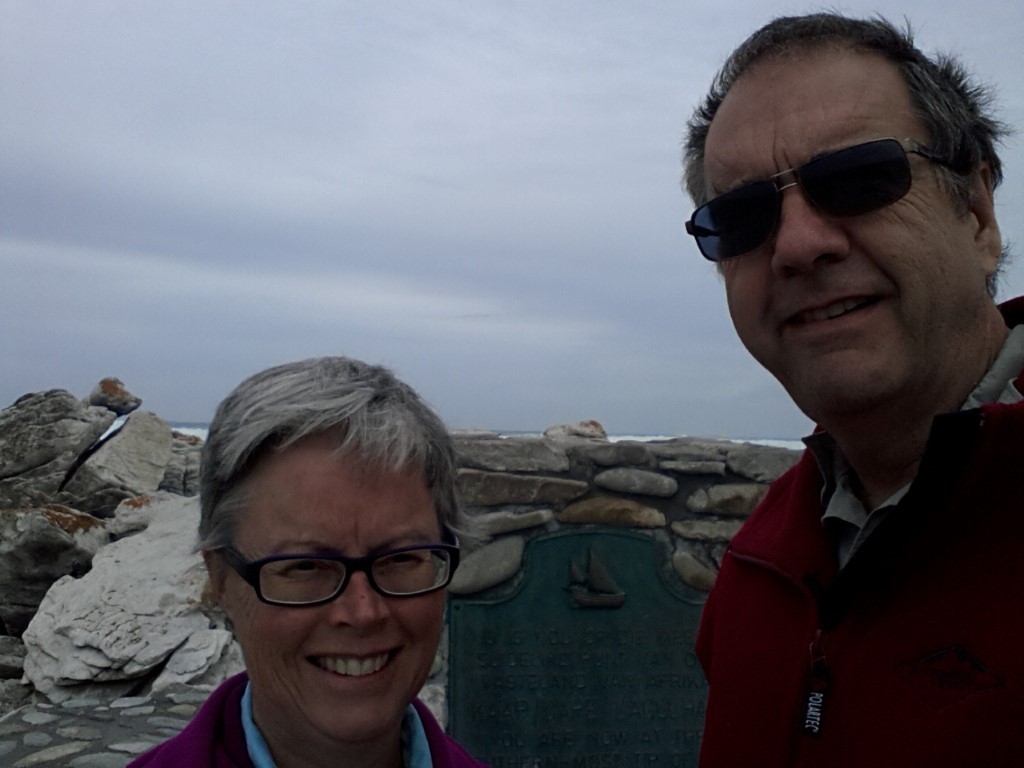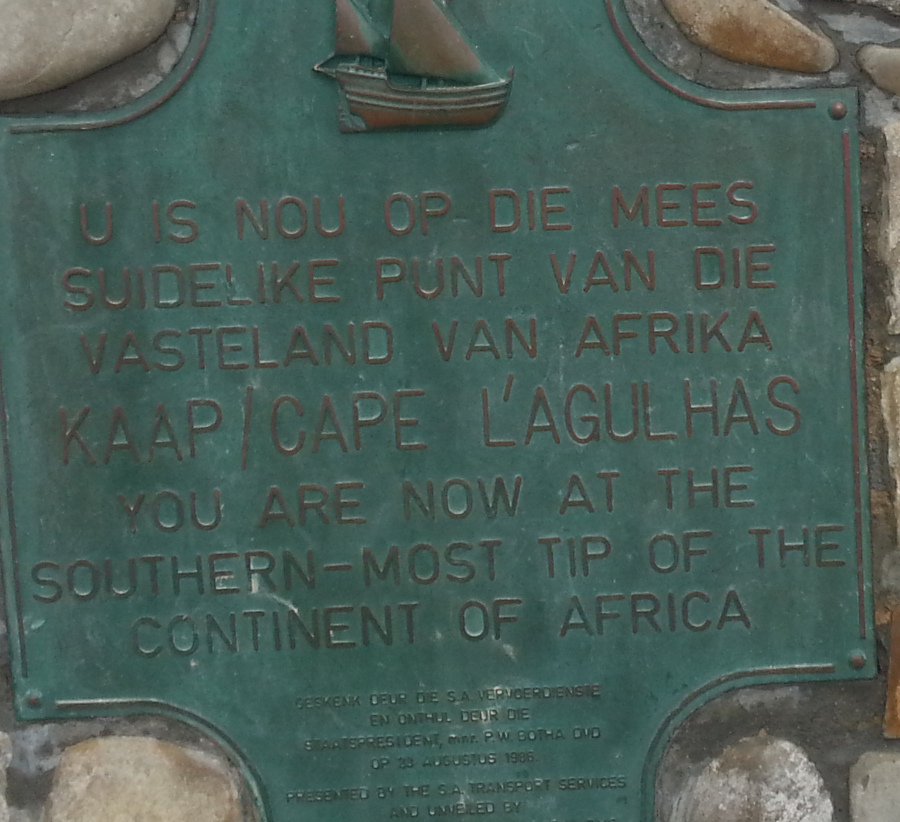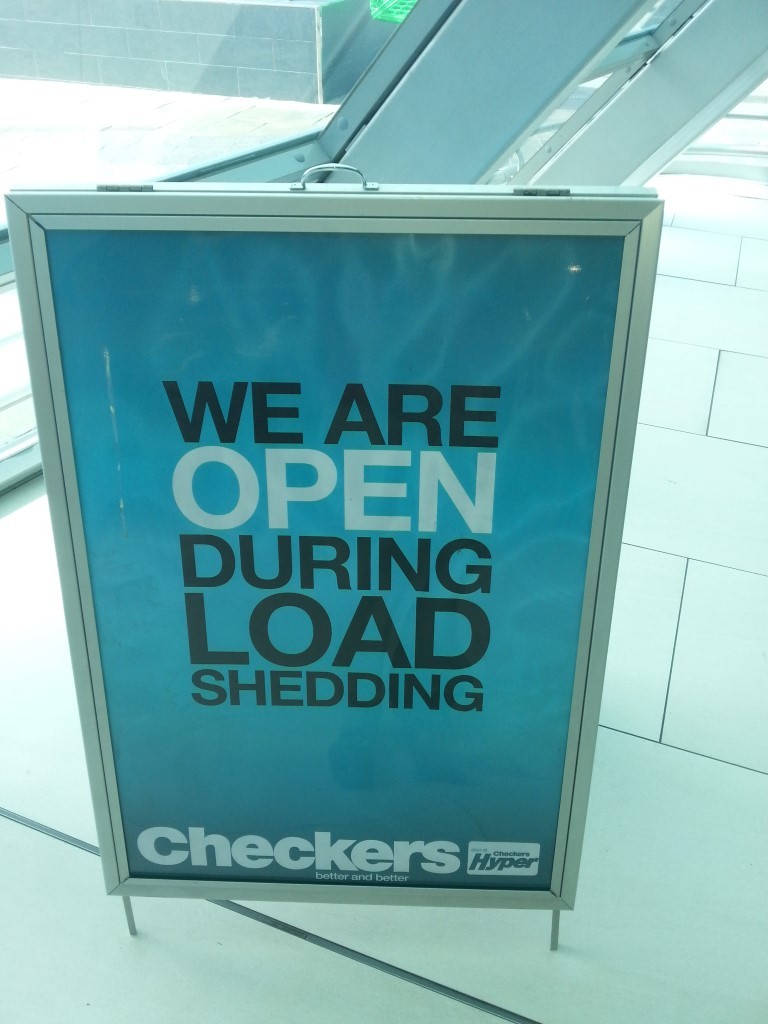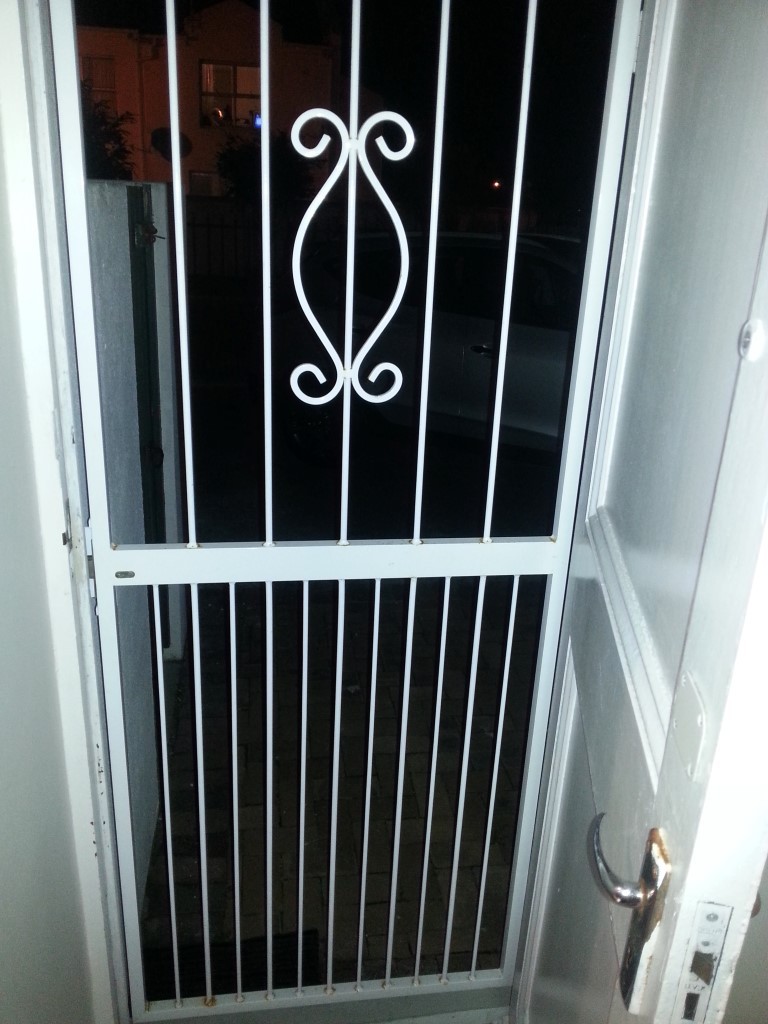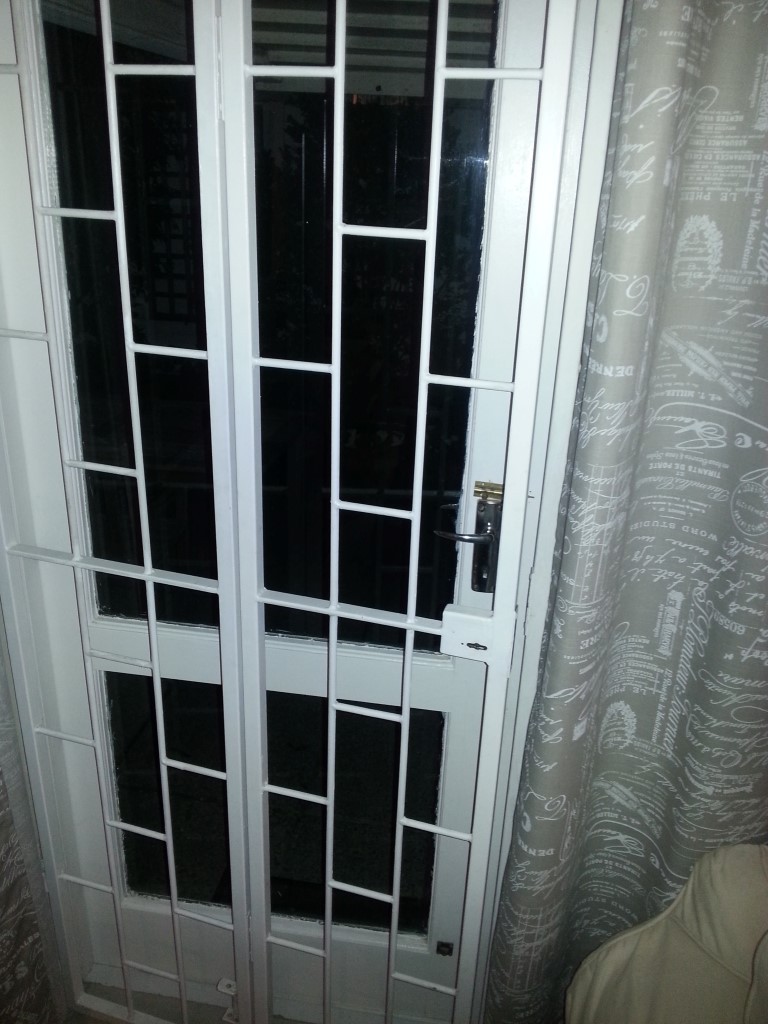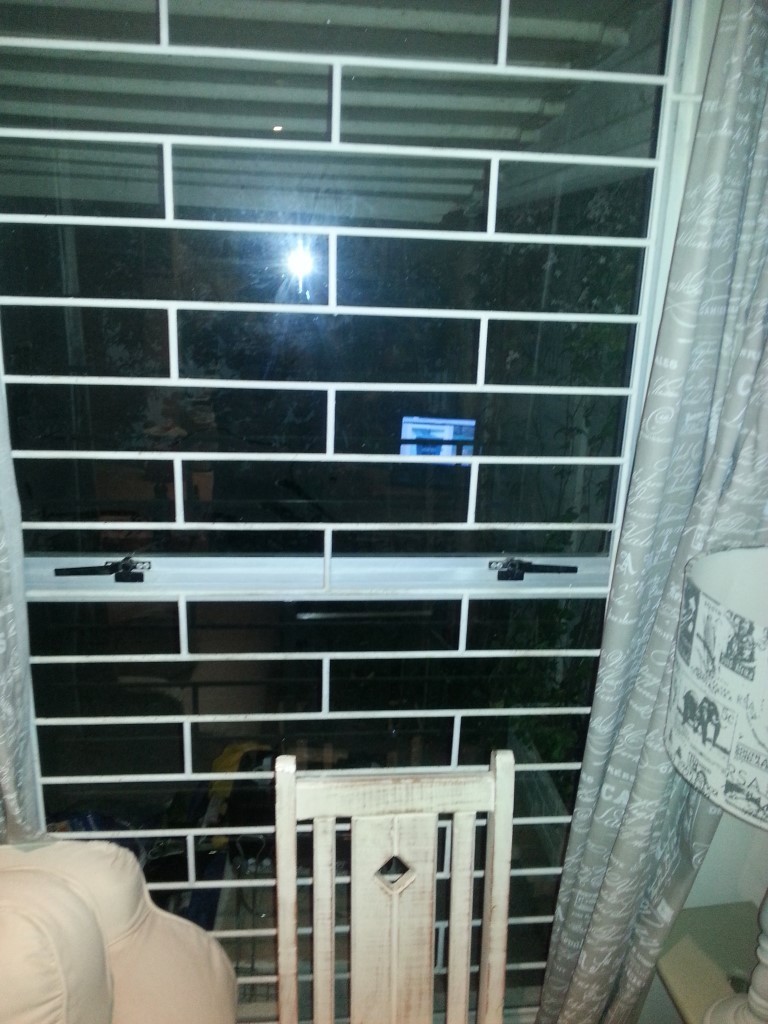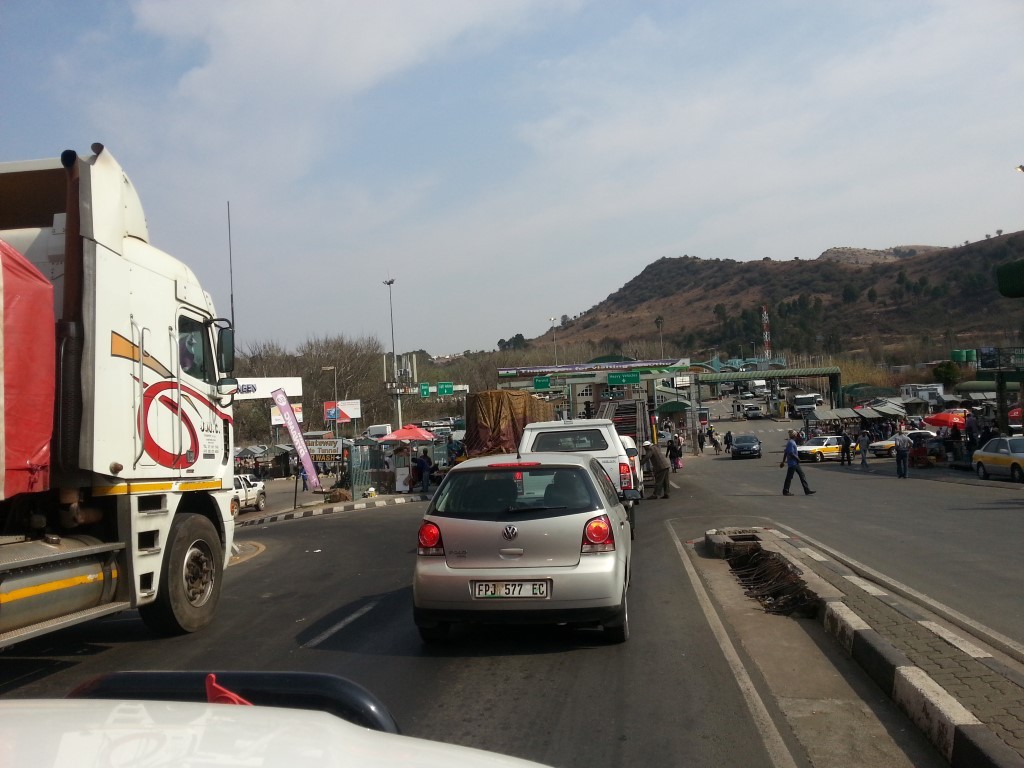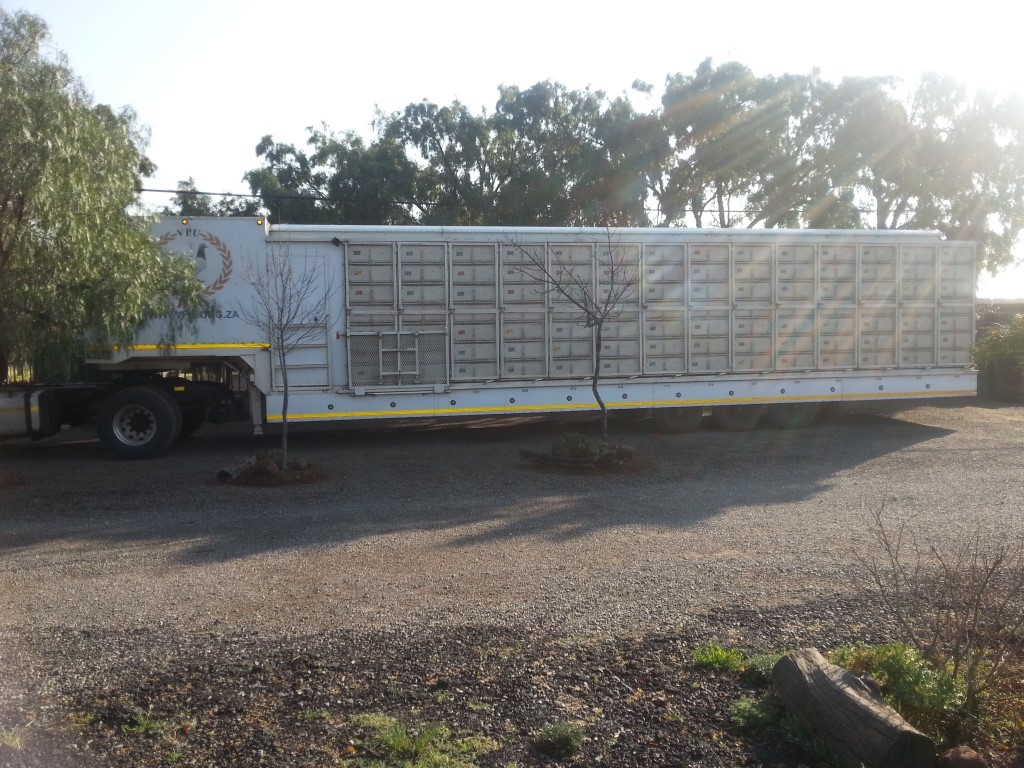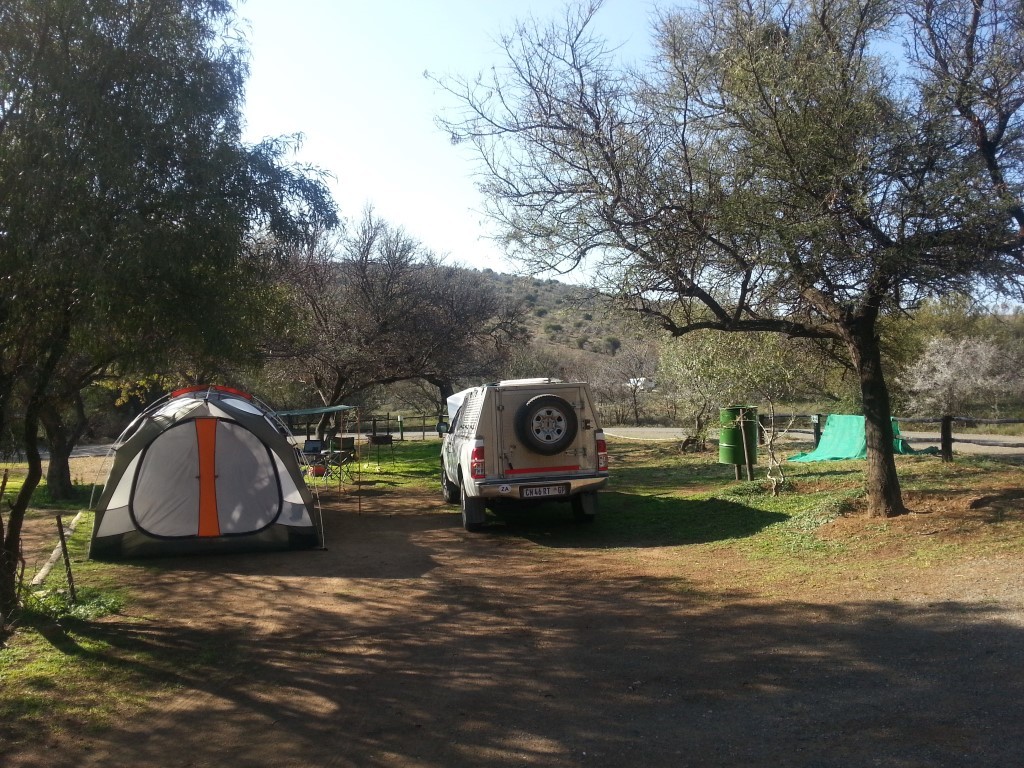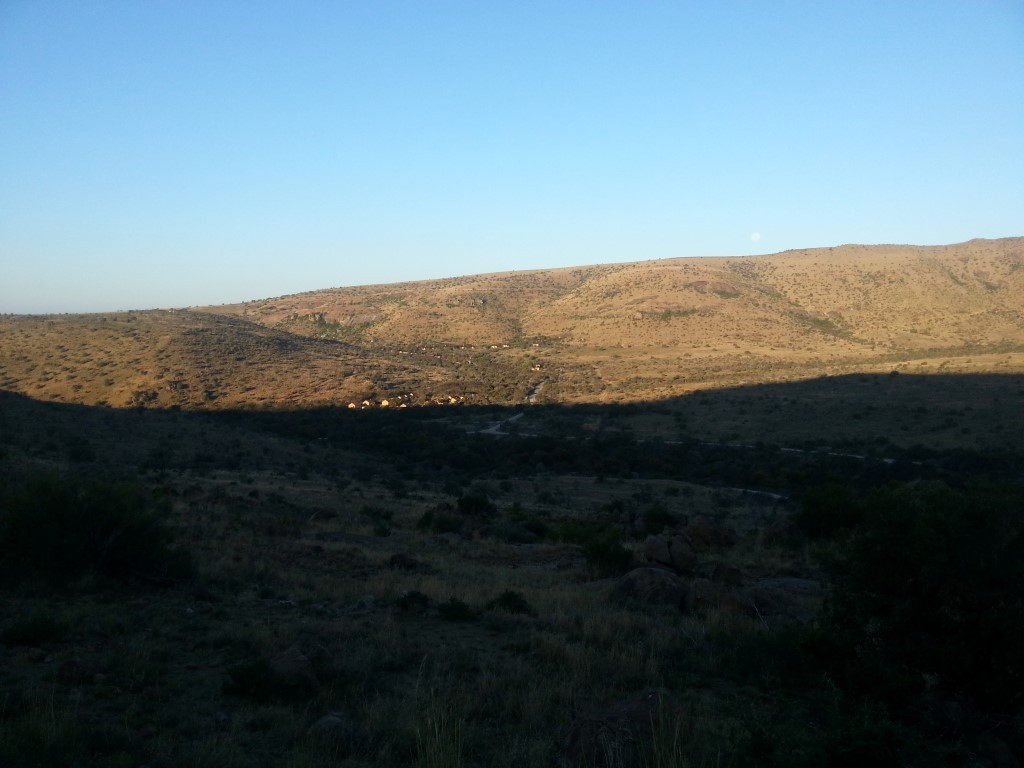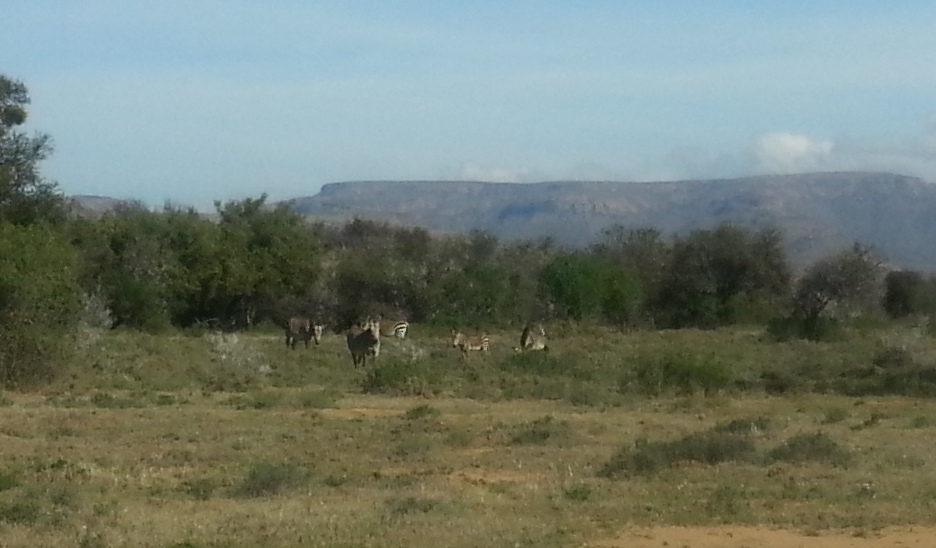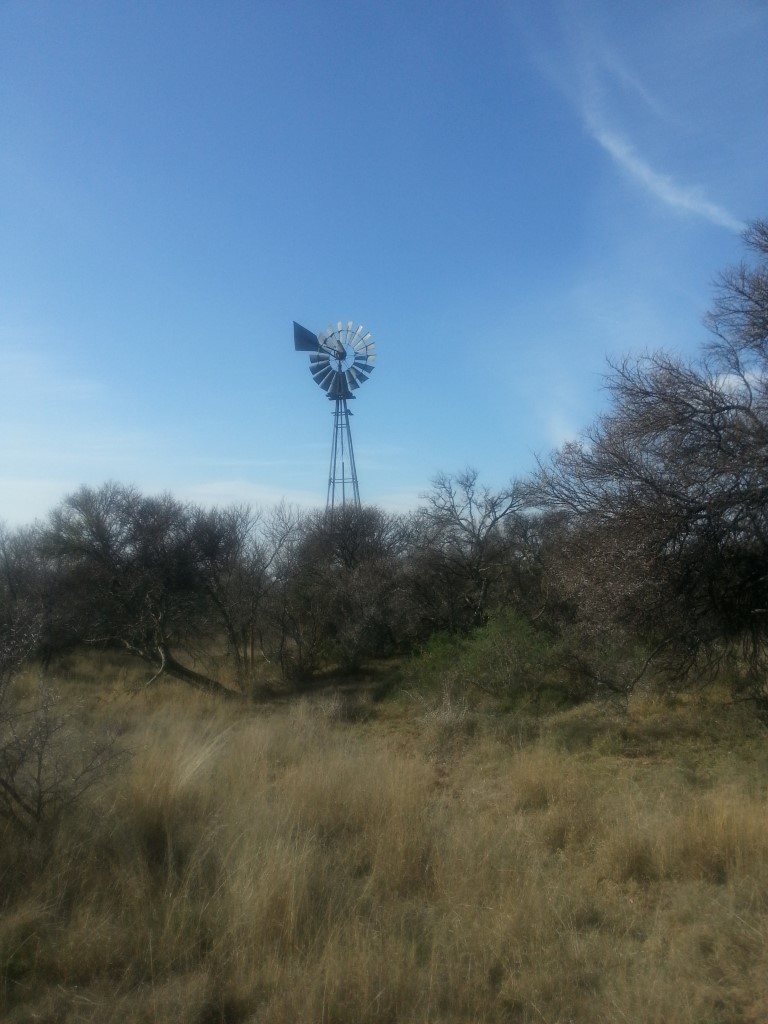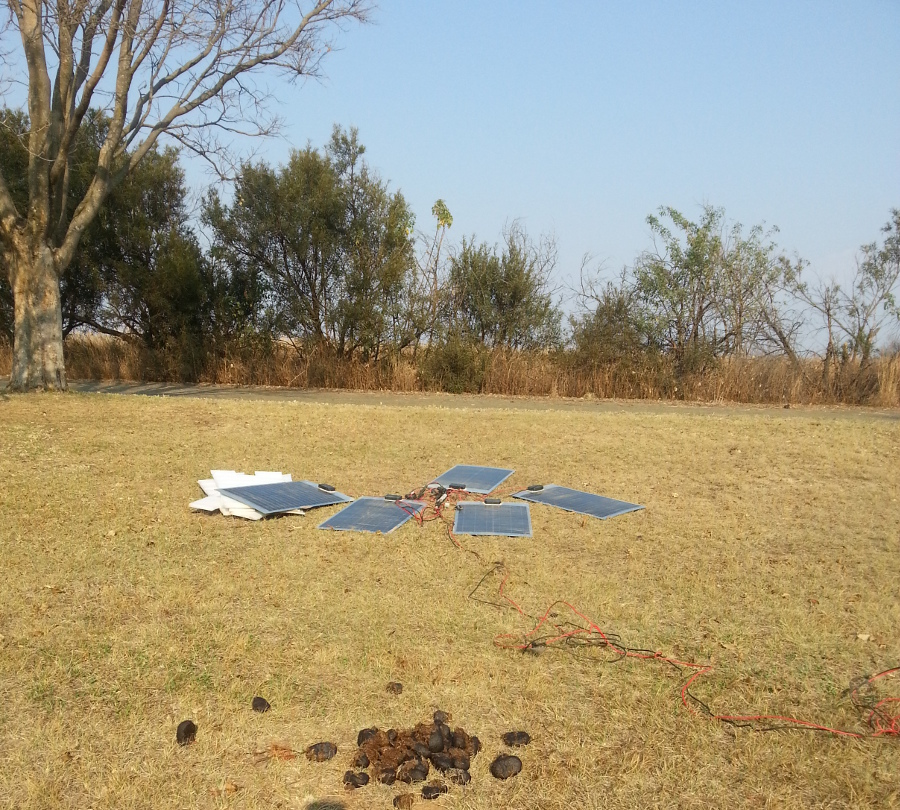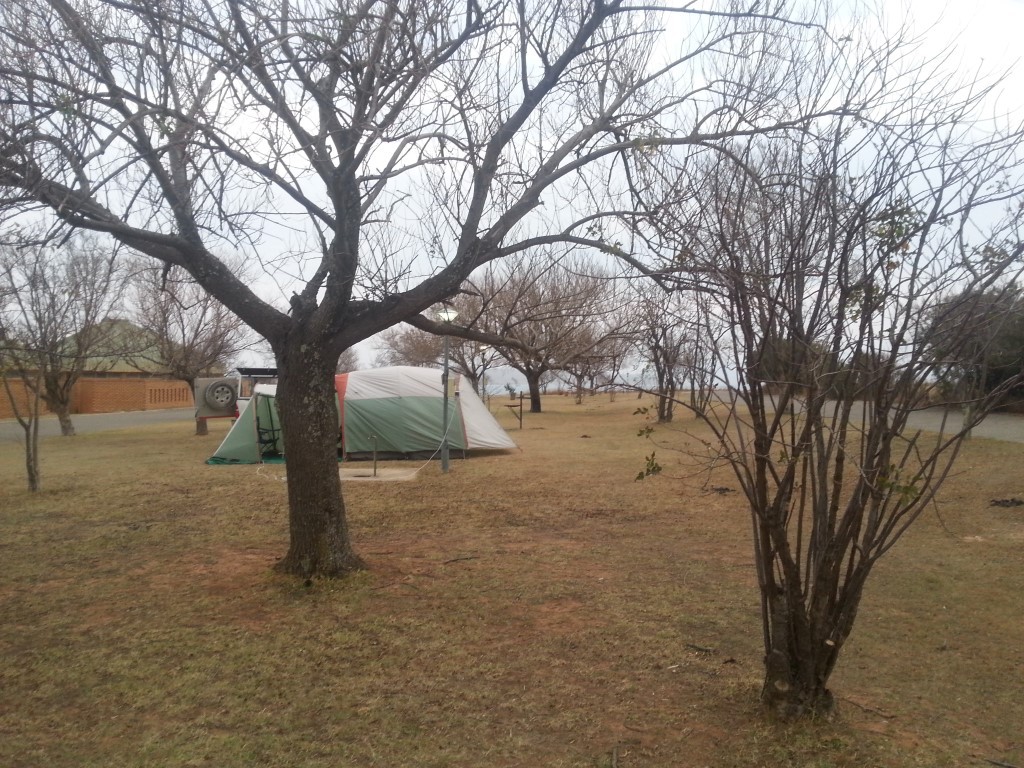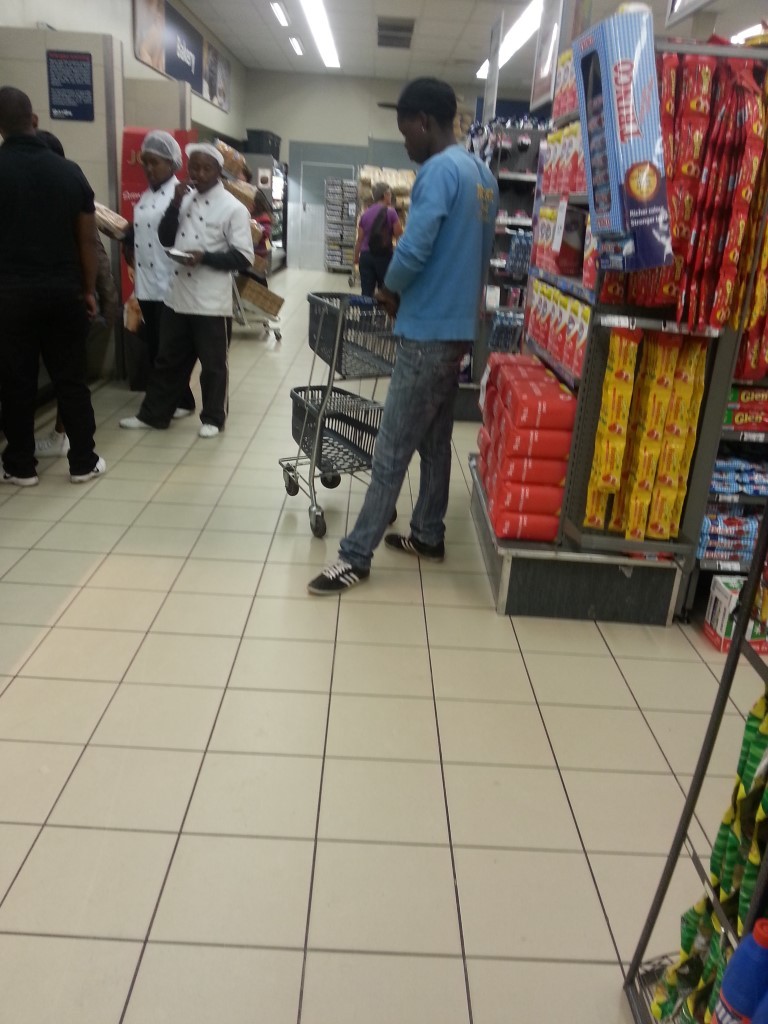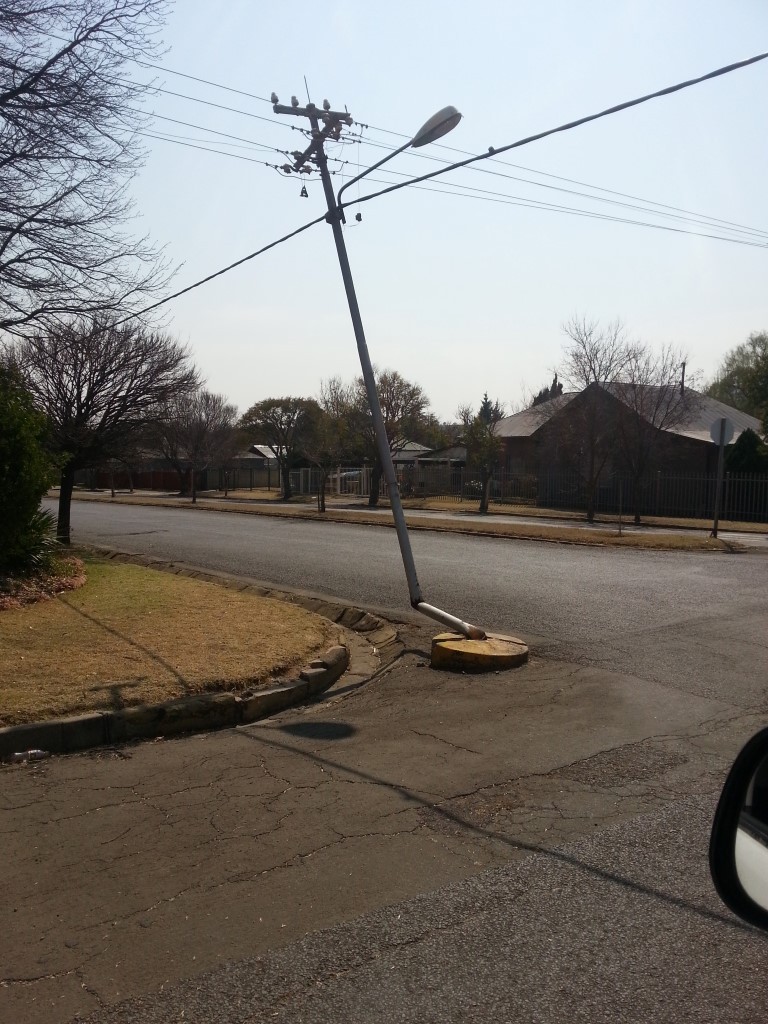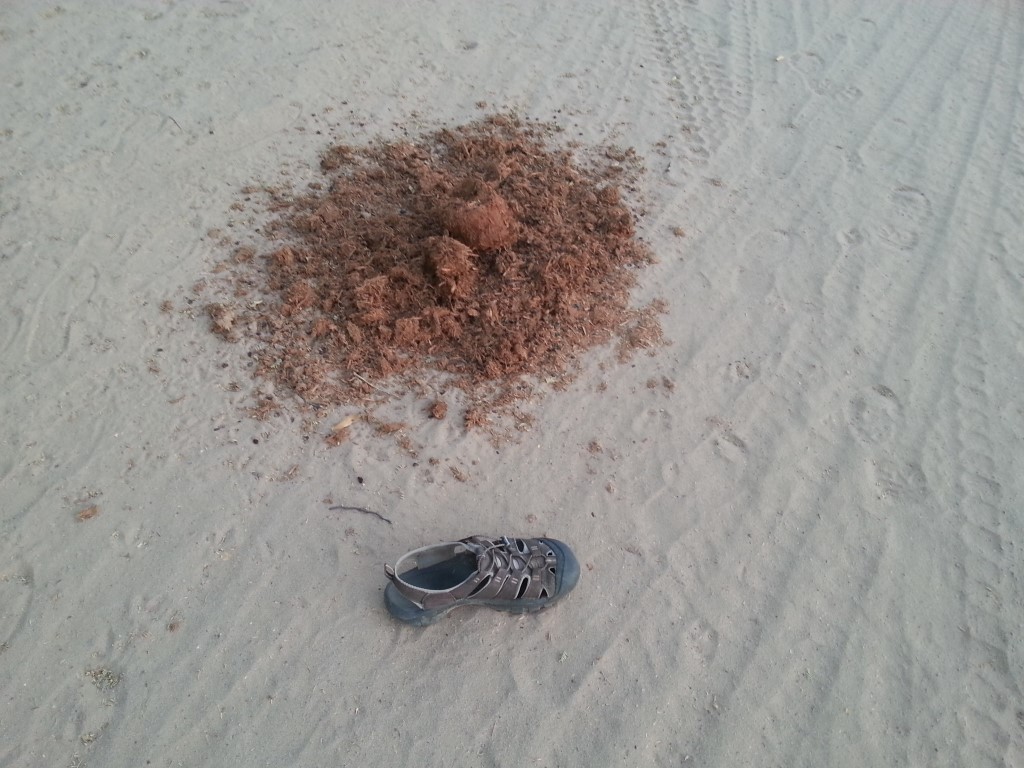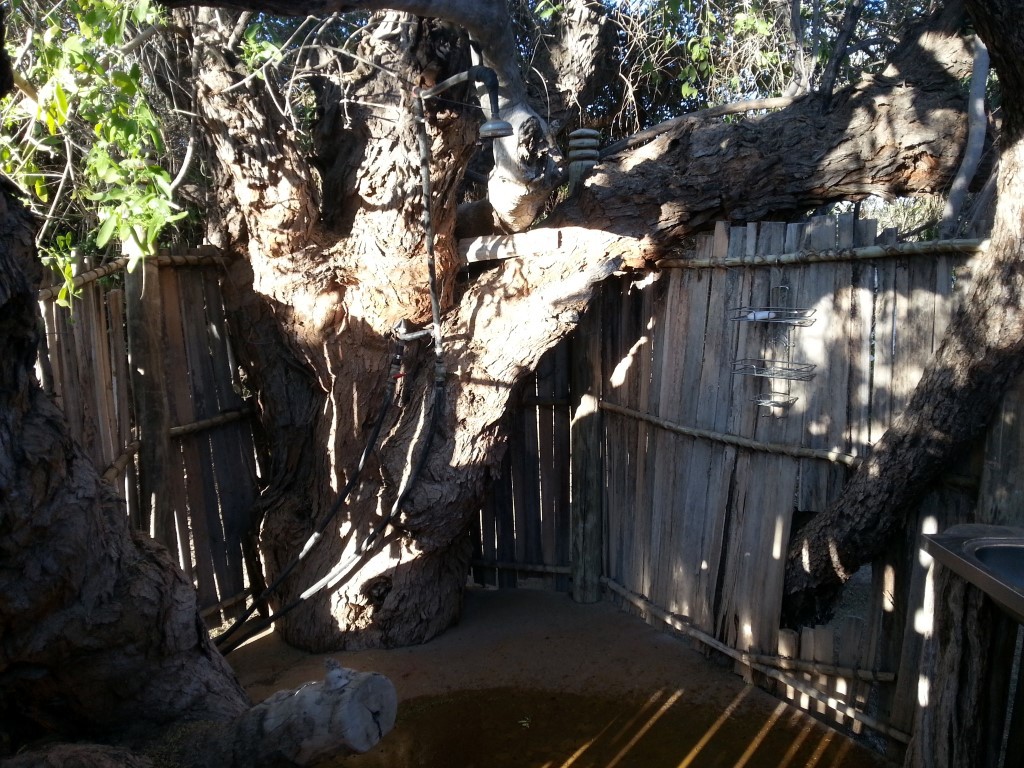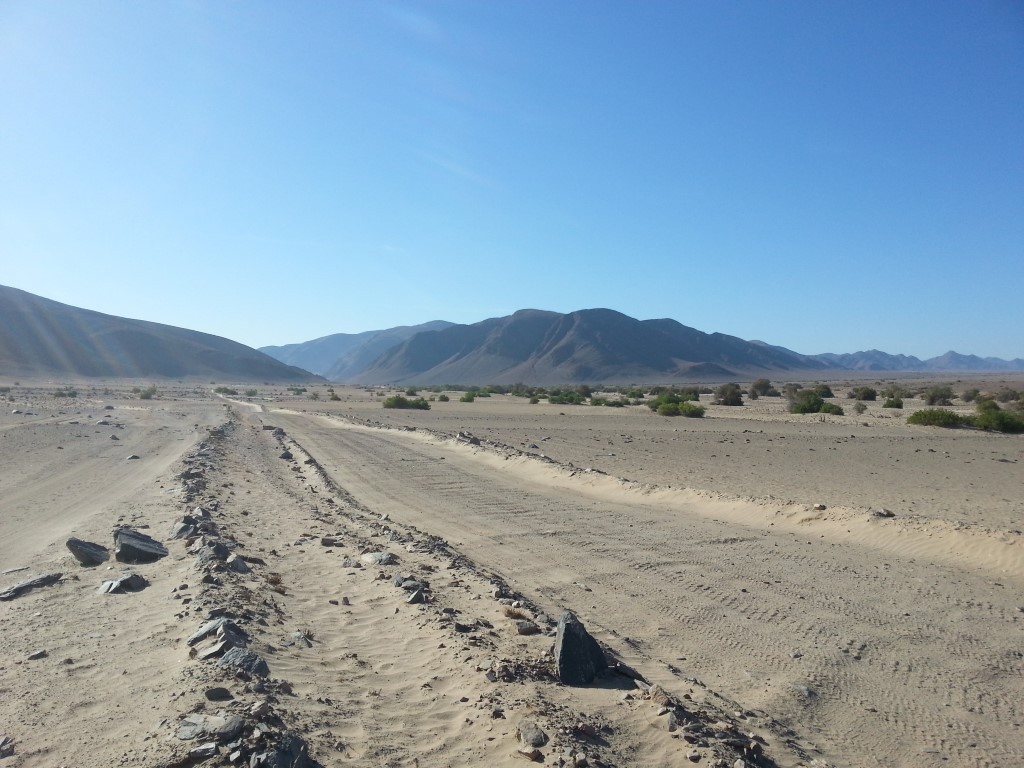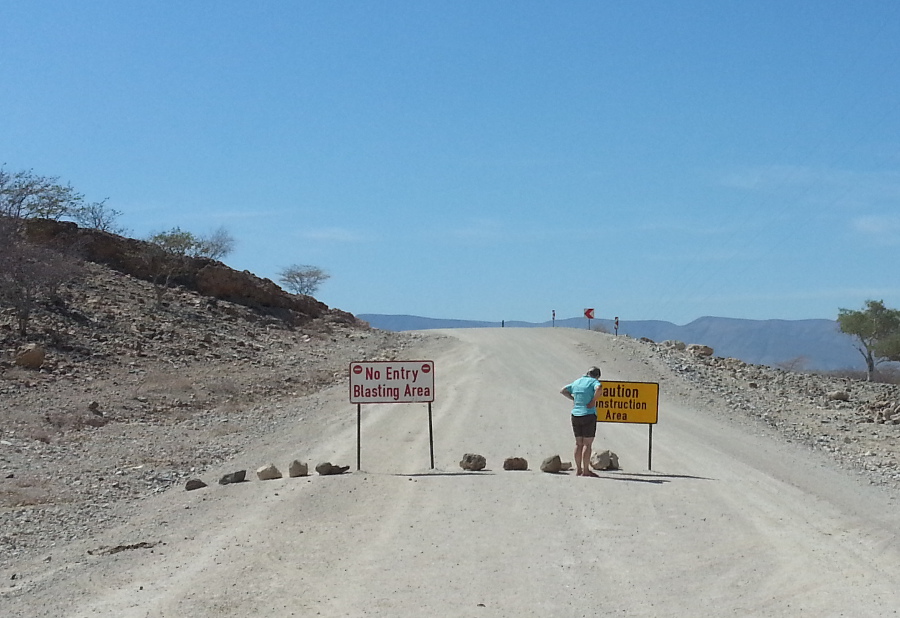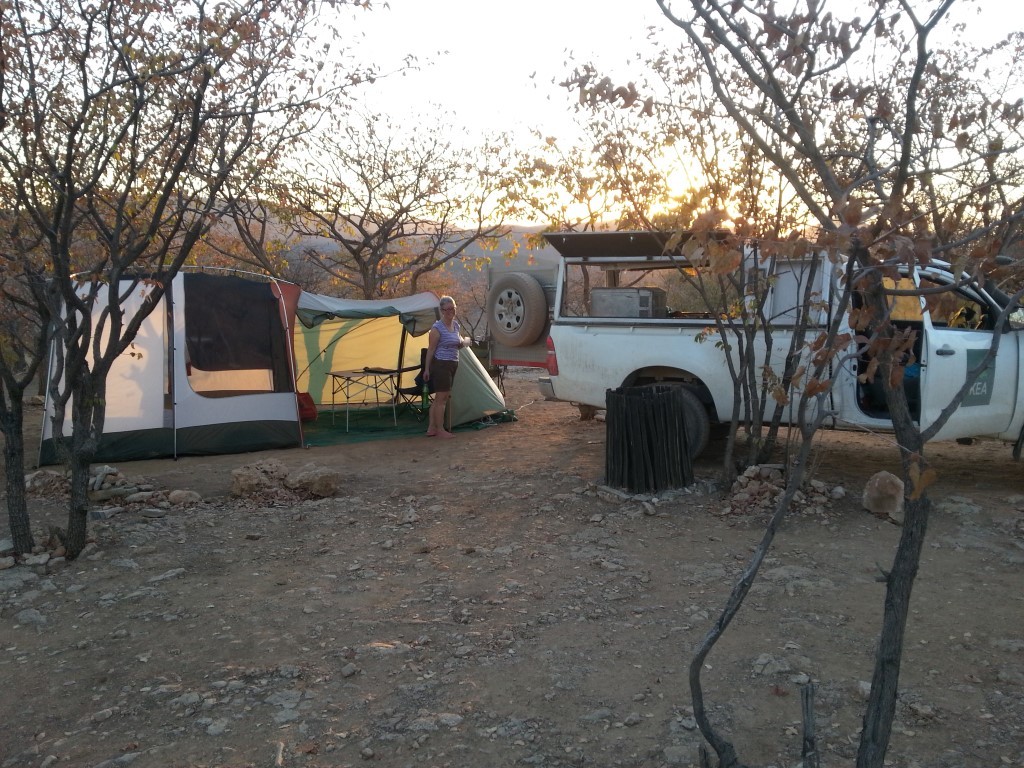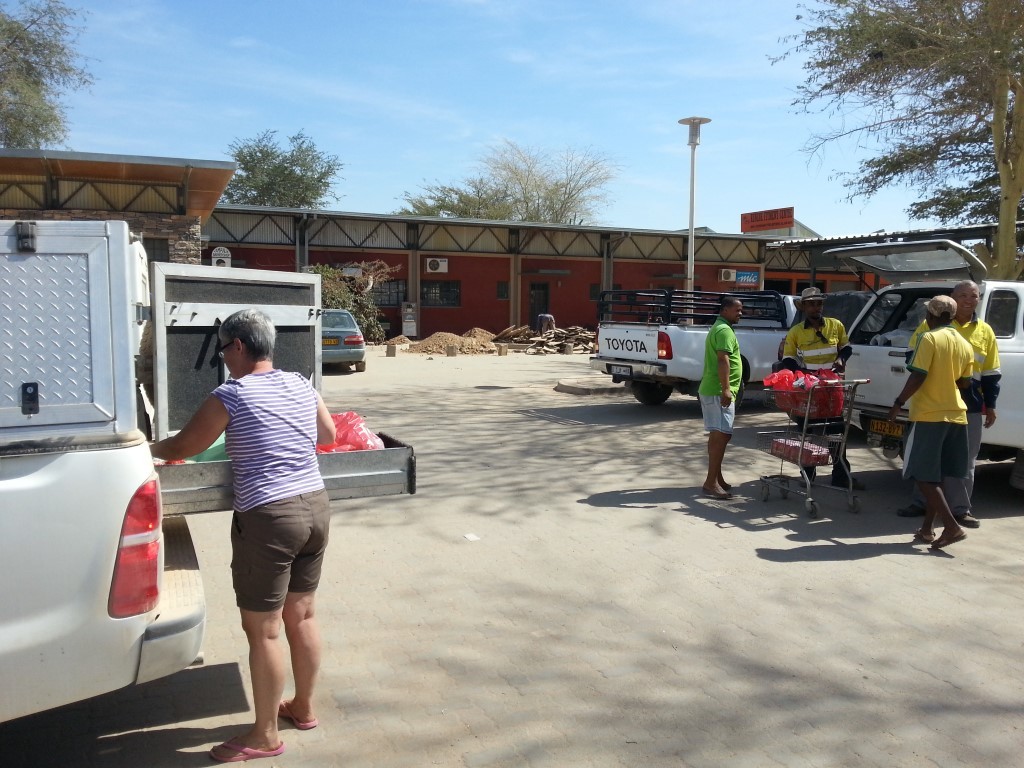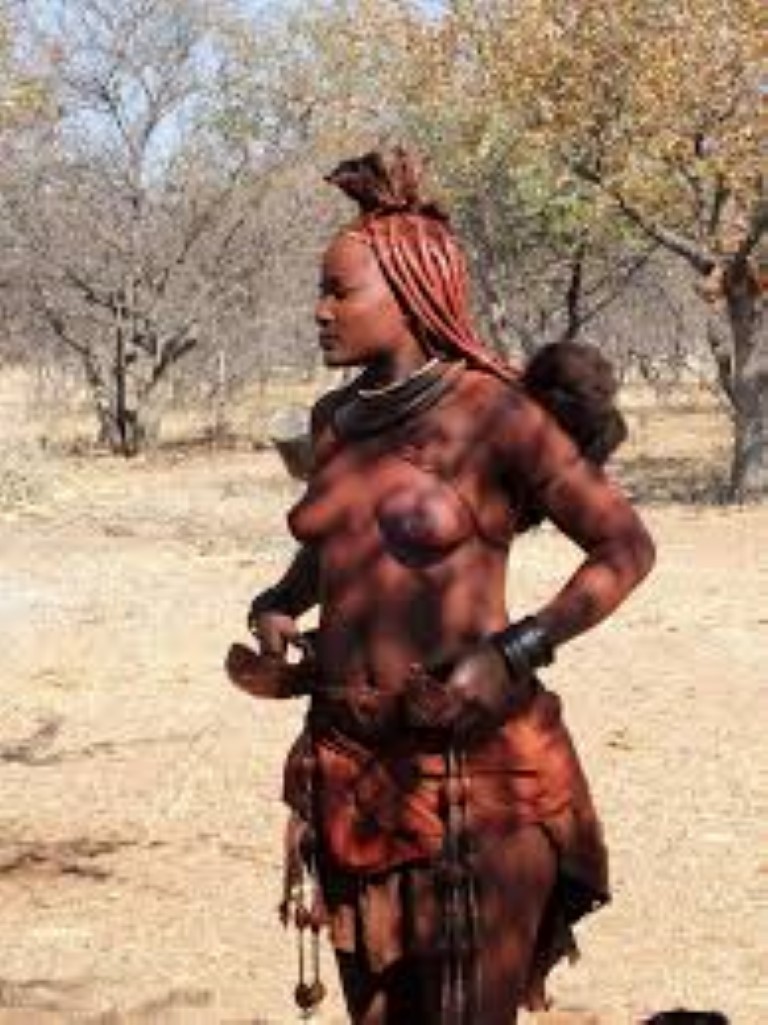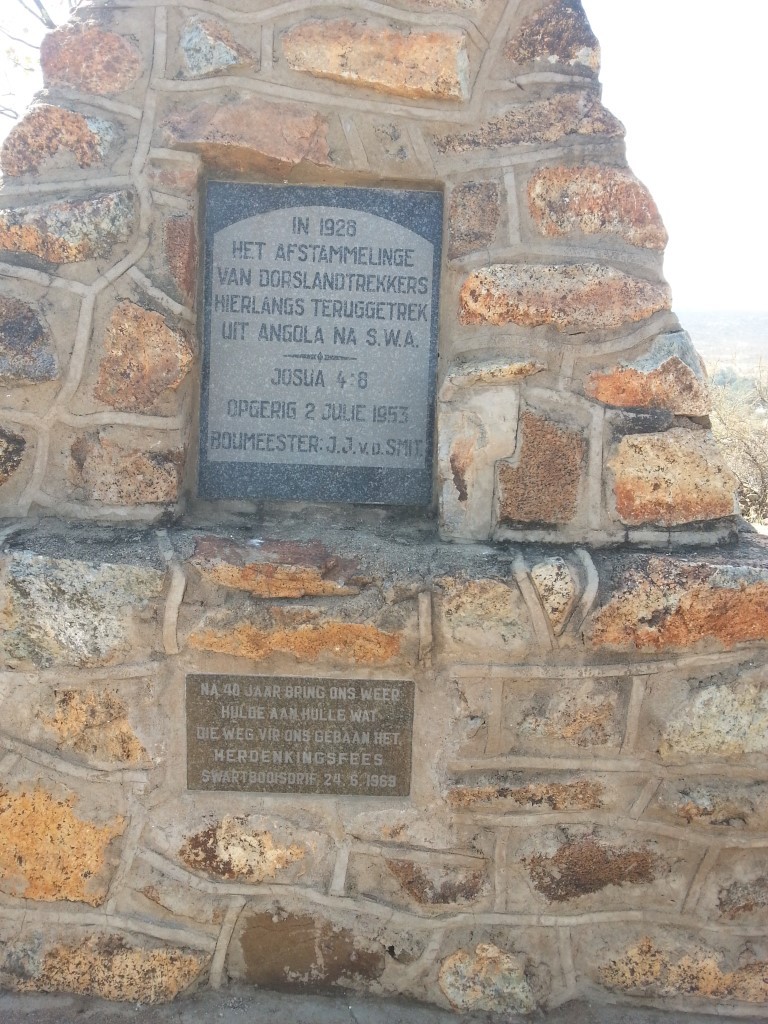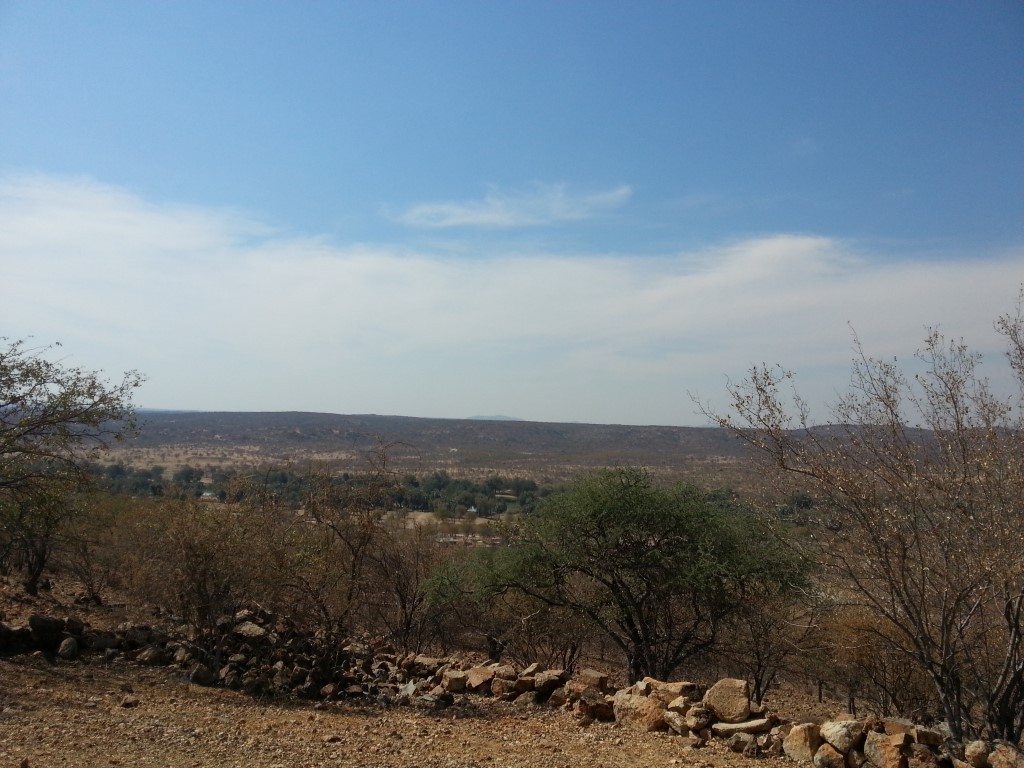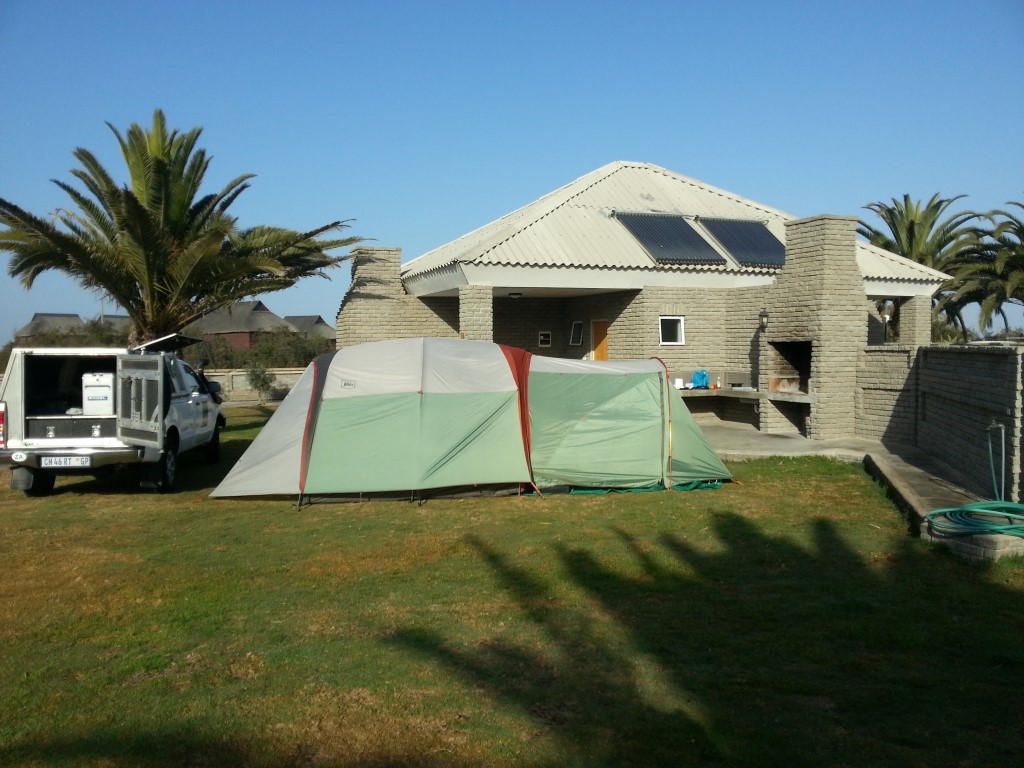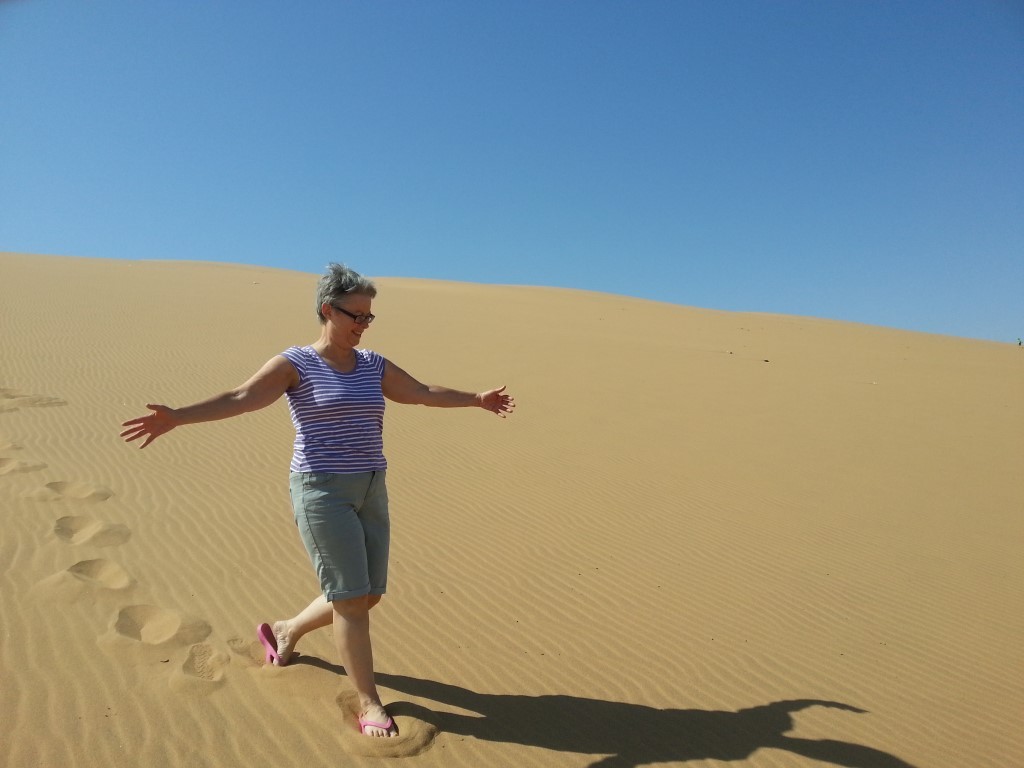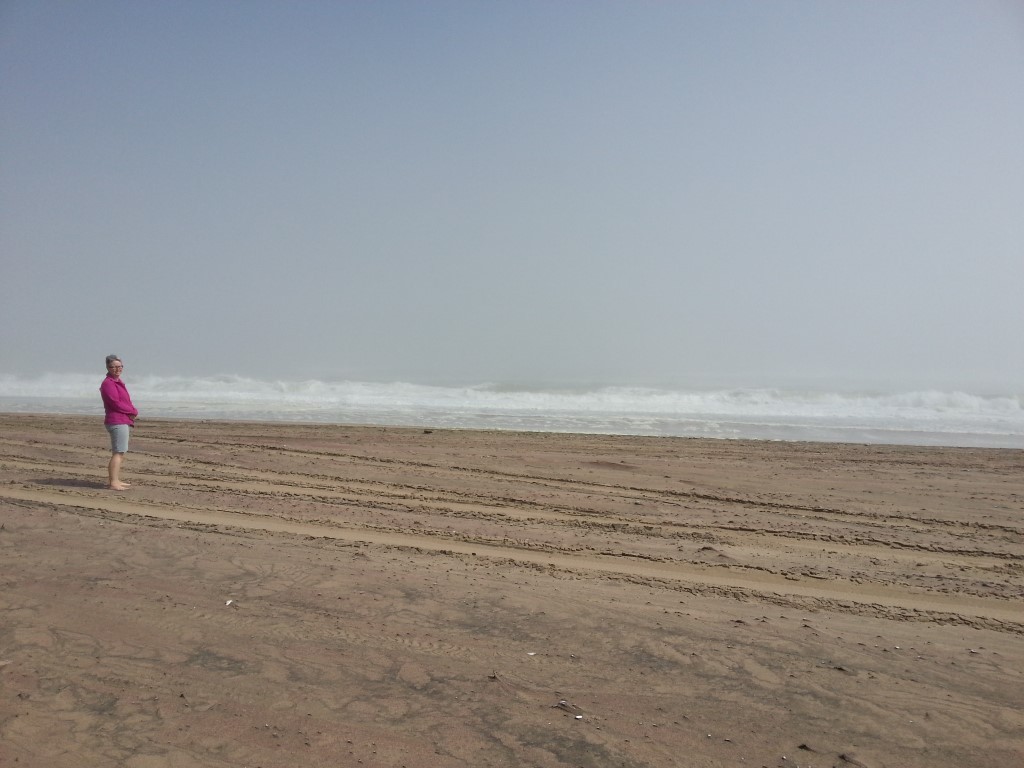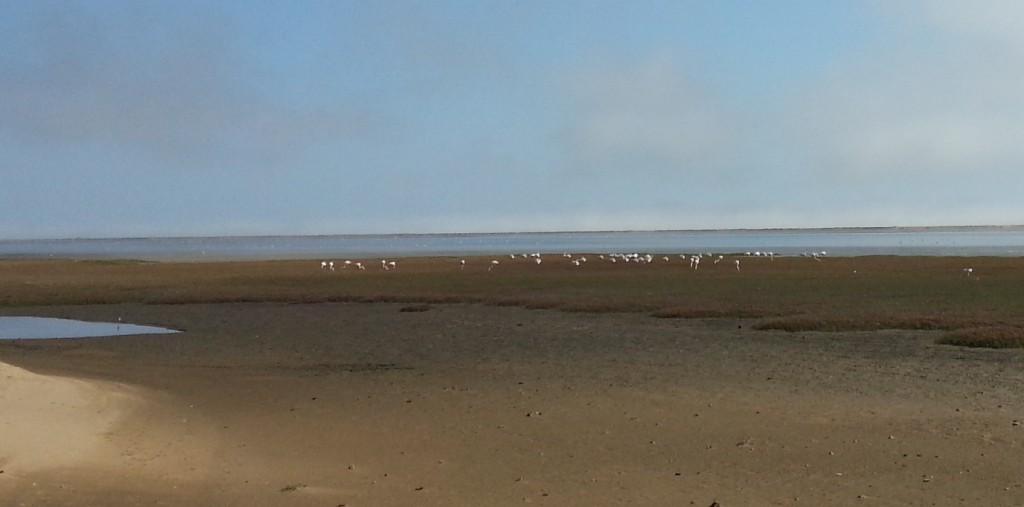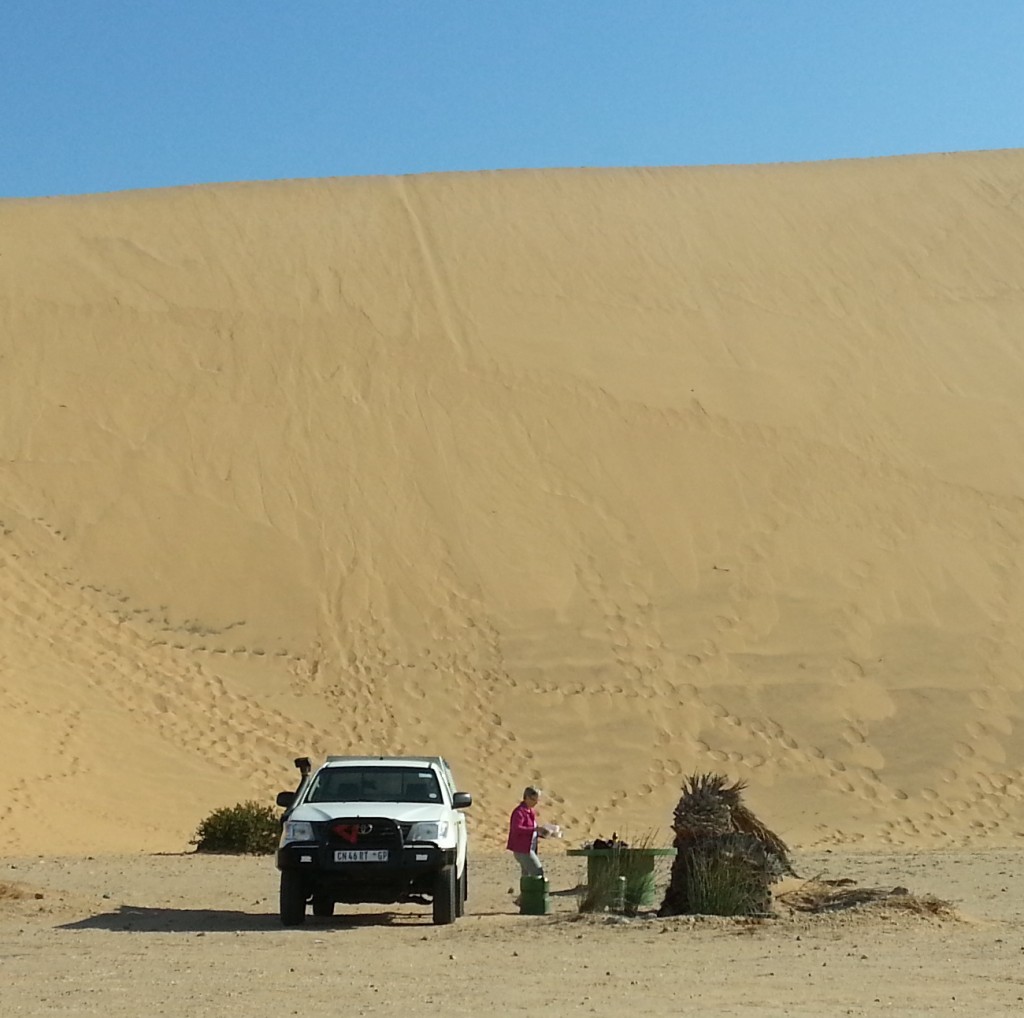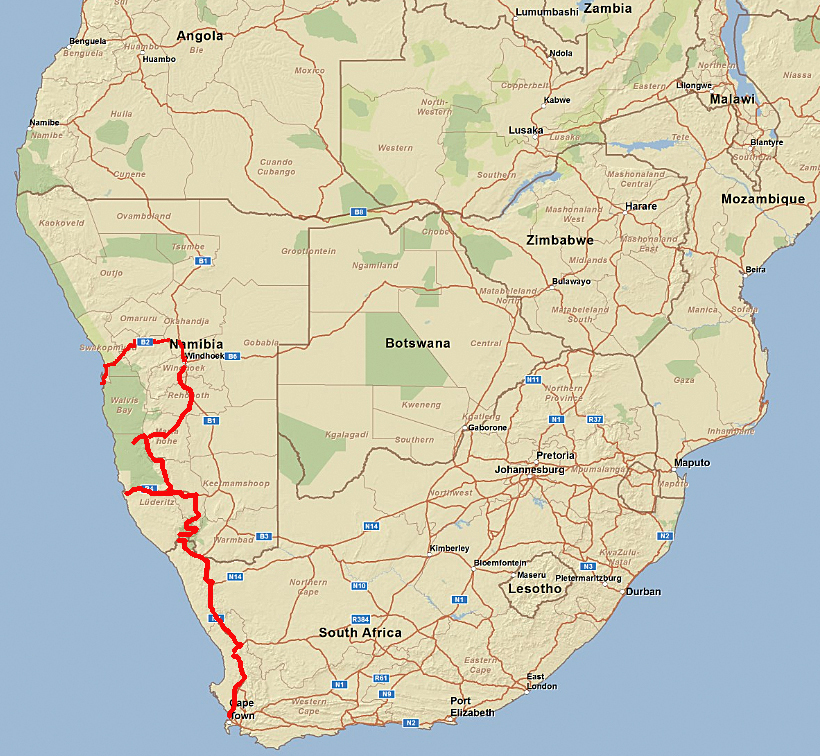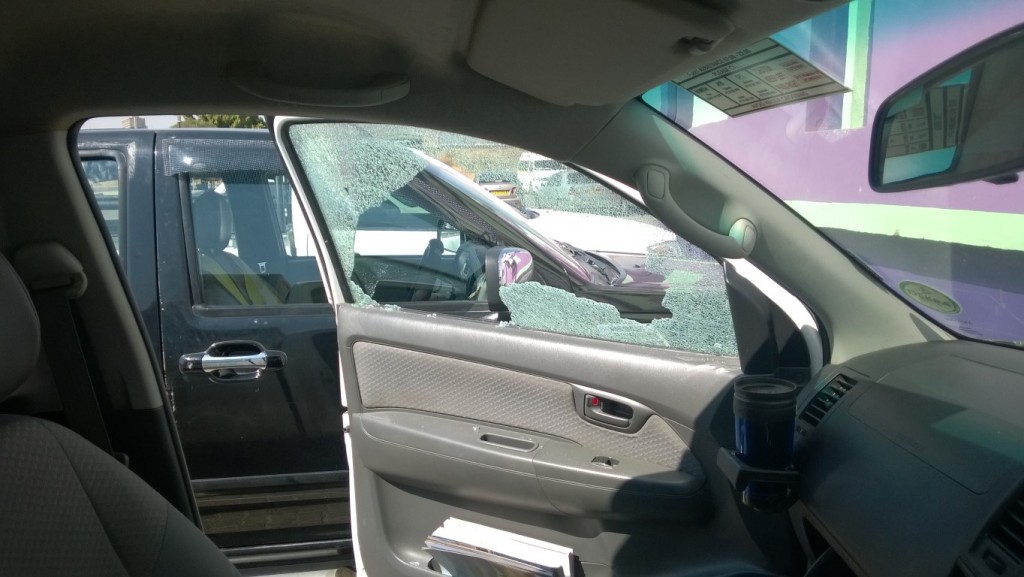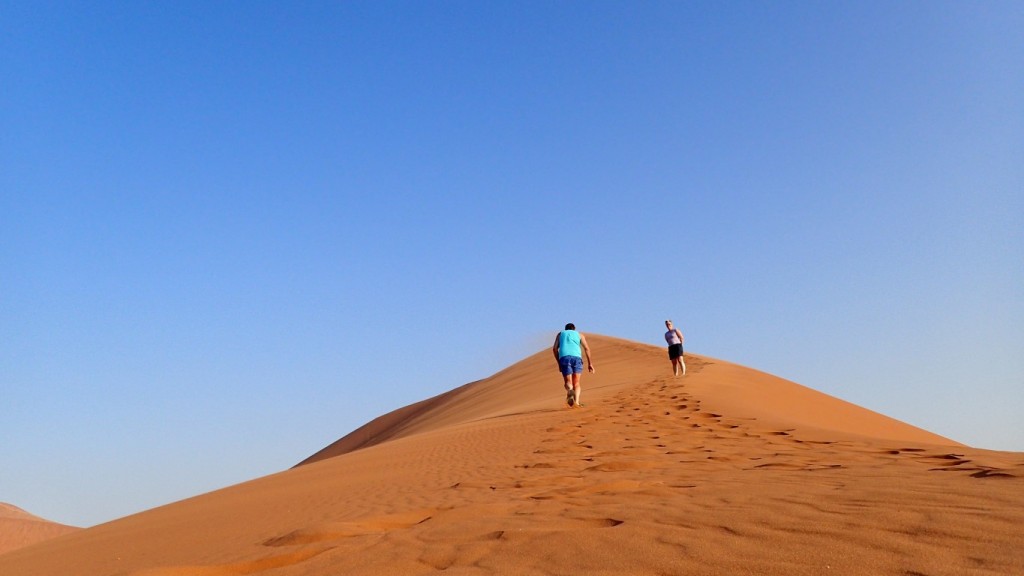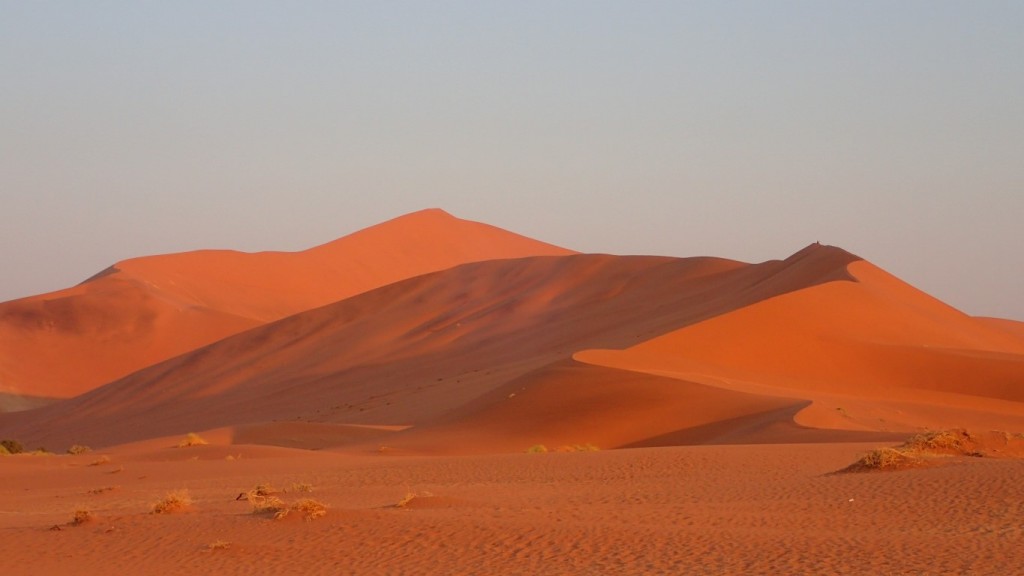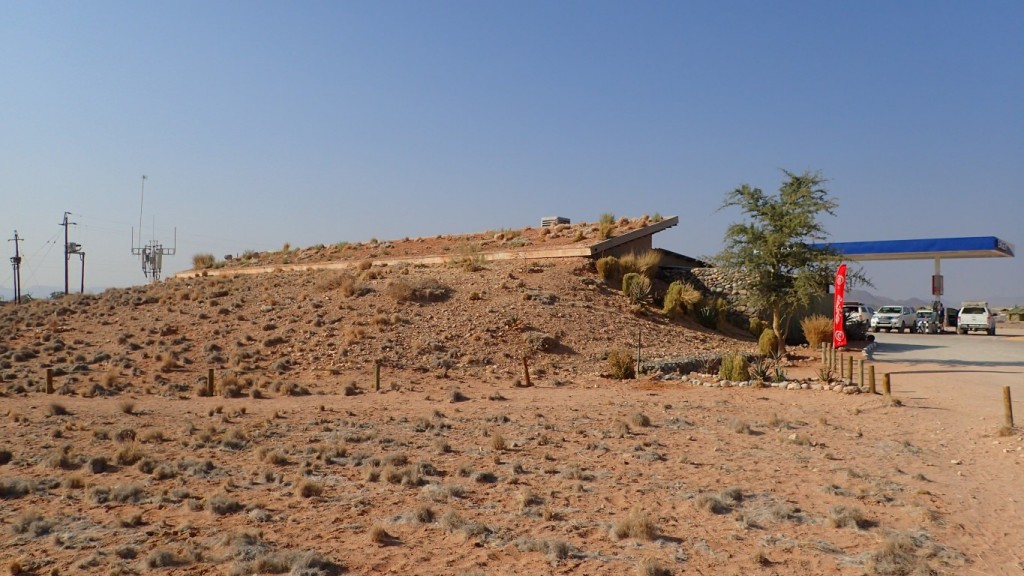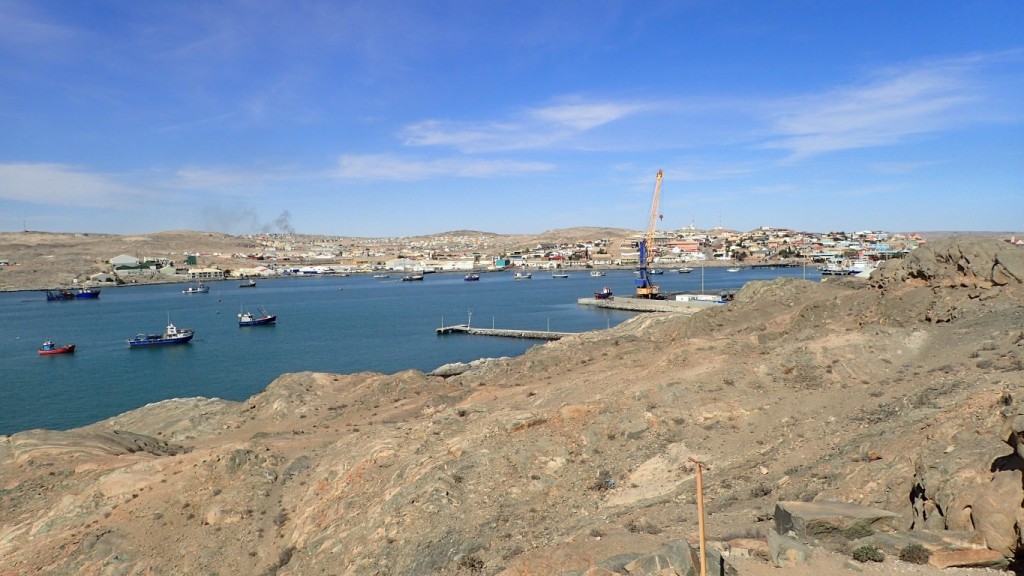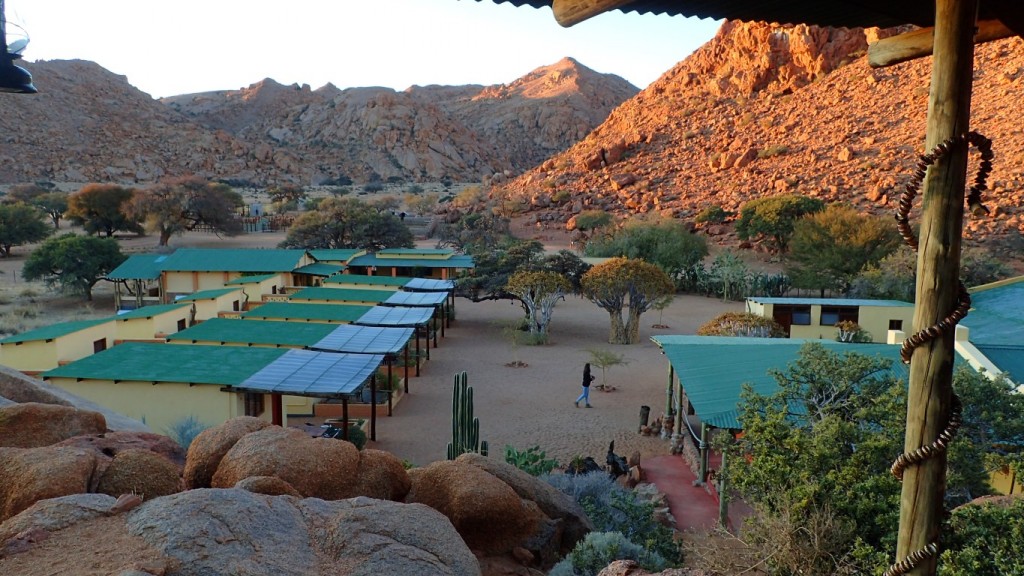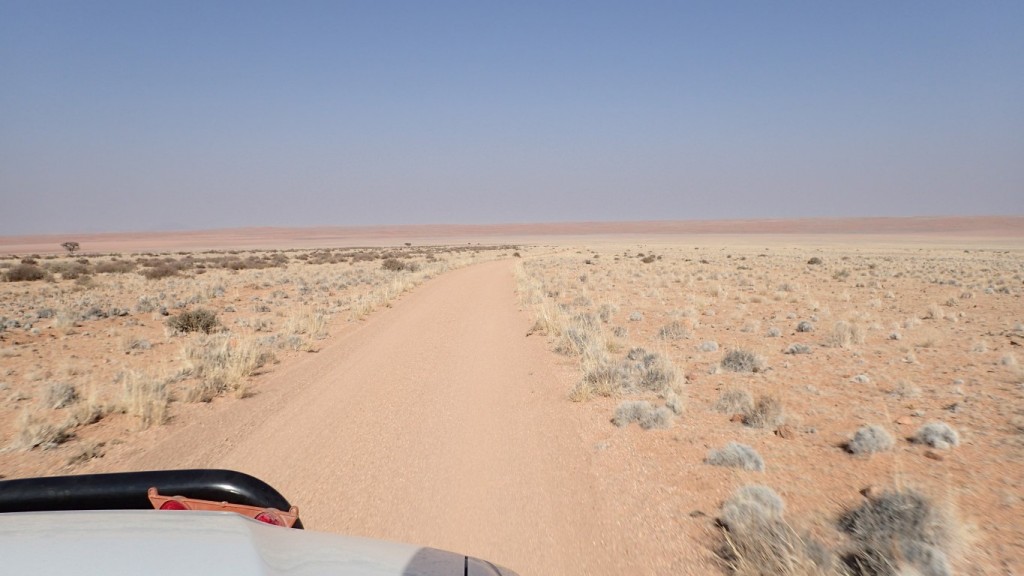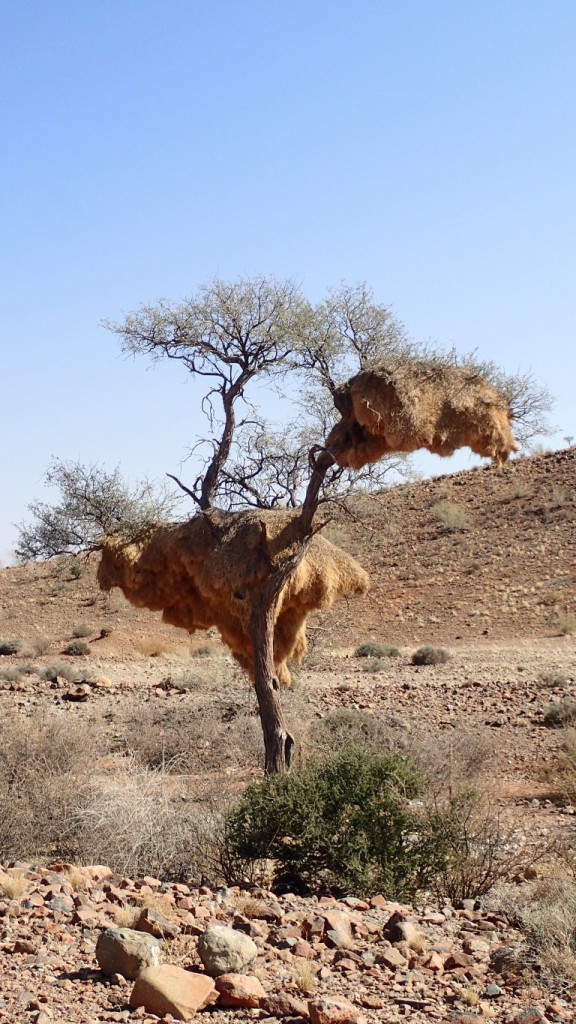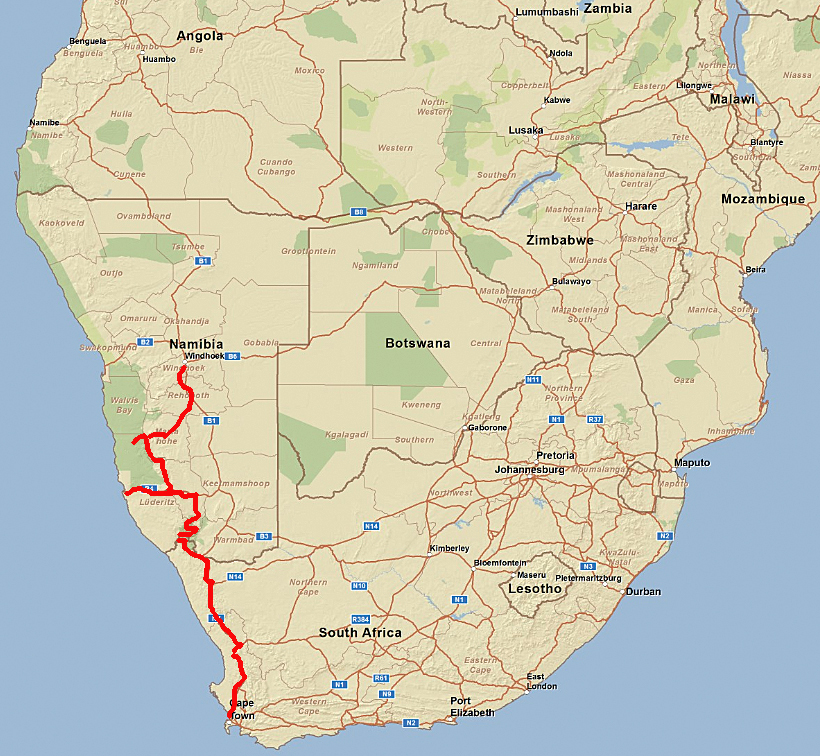We had planned to spend our last night in the tent at Glentana. We stayed at a nice campground there last time, just set back from the beach, lots of grass, good amenities. But when we left the Mountain Zebra National Park it rained for most of the trip and while we don’t really mind camping in the rain, packing up a wet tent is horrible, especially when we need it to be completely dry for the trip home. So we re-thought that idea and booked a hotel room in Mossel Bay, about 400kms east of Cape Town. We had dinner at Cafe Gannet and I had the seafood stew, a true bargain at 220 rand – about AUD$24. It had prawns, fish, mussels, calamari and half a crayfish! I have no idea how much it would cost at home – at least double, and probably a lot more. It was delicious.
We made a bit of a detour on the way back to Cape Town, to Cape Agulhas, southern-most point of Africa, and the point where the Atlantic and Indian Oceans meet. It had rained on and off during the day, but we were lucky that it stayed dry while we hopped out of the car, read the plaque and took photos. After the mayhem of cars, buses and people at The Cape of Good Hope earlier in the year, we were very surprised that there were only a few people at Agulhas, and no tour buses.
And then the drive on the N2 back to Cape Town. It must have rained a lot recently – a couple of rivers and creeks had broken their banks, dams were looking full, water on flat low-lying areas. The rural part of the drive was just endless rolling green and yellow (canola) hills, and the livestock looked good. Lots of heavily pregnant cows, and tiny white lambs. Even though it’s now Spring, there’s not much evidence around – we passed orchards where the trees still looked dormant, no blossoms or any hint of green yet.
We’ve done the big cull of stuff we aren’t taking home – 3 quilts, a set of fleece sheets, folding chairs, a spade, tent pegs, SA extension cord, a black denim skirt that I bought when I realised I didn’t have enough summer clothes (what on earth was I thinking – I hardly ever wear skirts!), the food we didn’t get around to eating and various other bits and pieces. Our Airbnb host has offered to take it all to an op shop for us.
Greg took the 4WD to be cleaned this morning and we have returned it and picked up another car that we’ll take back to the airport tomorrow. It was easier and cheaper to do that than get a taxi back to where we’re staying today, and then another taxi to the airport tomorrow morning.
So that’s it … another grand adventure almost over. Thanks for travelling with us. Sorry for the lack of musical accompaniment to this trip – internet access was mostly just too slow to be able to do more than write posts and add photos.
Our friend Wayne Manna is a keen musicologist and he made the following suggestion for our trip’s theme song. Thanks Wayne!
“The Great Heart” by Johnny Clegg. He is a British-born muso (and I think an anthropologist) living in South African who incorporates a lot of African themes into his music and has recorded heavily with South African musicians.”
Youtube link:
https://www.youtube.com/watch?v=OlpKDYJRzMk
